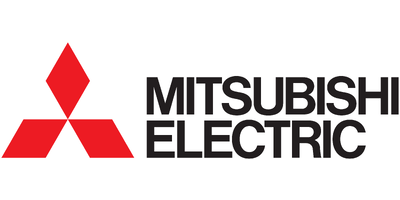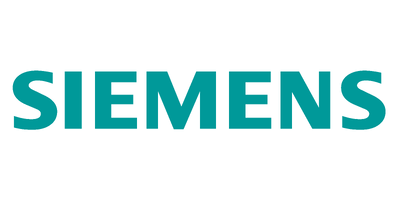advertisement
10/93/75
RS232 Interface Circuits for 3.3V Systems – Design Note 75
Gary Maulding
The rapid, widespread use of 3.3V logic circuits compli-
cates the selection of RS232 interface circuits. The opti-
mum choice of an interface circuit should be based upon
several application dependent factors:
1) Logic circuitry connected to interface chip
2) Power supply voltages available
3) Power consumption constraints
4) Serial interface environment
5) Mouse driving requirements
As Figure 1 illustrates, 5V interface circuits cannot be used
to directly connect to 3.3V CMOS logic circuits. The re-
ceiver output level will forward bias the logic circuit’s input
protection diode, causing large current flow. In the worst
case the CMOS logic circuit may latch up. Resistor voltage
dividers or level shift buffers may be used to prevent
forward biasing the CMOS input diode, but an RS232
transceiver designed for 3V logic application prevents this
problem without extra components or power dissipation.
Many of today’s systems have both 5V and 3V power
supplies. In these systems, an RS232 interface chip which
uses the 5V supply for charge pump and driver operation
and the 3V supply for receiver output levels, provides the
best performance. The 5V operation of the charge pump
and drivers gives full RS232 output levels and sufficient
current drive for operating a serial port mouse. The LT1342,
LT1330, and LT1331 are all good RS232 transceiver choices
for systems with both 5V and 3V power. Typical perfor-
mance waveforms for the LT1342 operating with V
CC
= 5V
and V
L
= 3.3V are shown in Figure 2.
Systems with only a 3V power supply are unable to use 5V
powered RS232 interface circuits. Charge pump triplers (or
quadruplers) have losses too great for generating RS232
voltage and current levels from a 3.3V supply. The LT1331
and LTC1327 provide solutions for 3V only systems. The
LT1331 circuit is usable in both 5V/3V mixed or 3V only
systems. When the charge pump is operated from 3V sup-
plies, it powers the driver circuitry to provide RS562 output
levels (see Figure 3). RS562 is a newer serial data interface
standard than RS232 with lower (±3.7V) driver output levels
and extended (64k baud vs 20k baud) data rates. RS562
systems and RS232 systems are universally interoperable.
The LTC1327 also provides RS562 output levels from a 3V
supply. This circuit features ultra-low 300µA supply current
to maximize battery life. An advanced CMOS process makes
this low current operation possible without compromising
the rugged overvoltage and ESD protection available on
Linear Technology’s bipolar interface circuits.
VPP Switcher Drives 3V RS232
When fully RS232 compliant operation or mouse driving is
required in a 3V only system, the LT1332 provides the
solution. The
LT1332 is specifically designed to be used
DRIVER OUTPUT
R
L
= 3k
C
L
= 2500pF
RECEIVER
OUTPUT
INPUTS
DN75 • F02
Figure 2. LT1342 Outputs for VCC = 5V and VL = 3.3V
V
CC
= 5V V
LOGIC
= 3.3V
RS232 RECEIVER OUTPUT LOGIC INPUT
DN75 • F01
Figure 1. 5V Receiver Forward Biases Logic Input Diode
Linear Technology Corporation
1630 McCarthy Blvd., Milpitas, CA 95035-7487
(408) 432-1900
●
FAX
: (408) 434-0507
●
TELEX
: 499-3977
LT/GP 1093 190K
LINEAR TECHNOLOGY CORPORATION 1993
For literature on our RS232 Interface Products,
call (800) 637-5545. For applications help,
call (408) 432-1900, Ext. 453
Figure 3. LT1331 Outputs for VCC = VL = 3.3V
DN75 • F03
DRIVER OUTPUT
R
L
= 3k
C
L
= 2500pF
INPUTS
RECEIVER
OUTPUT
in conjunction with a micropower switching regulator
like the LT1109A. The switcher provides 12V needed for
flash memory VPP and the RS232 V+. A capacitor from
the switcher’s drive pin (VSW) to on-chip diodes in the
LT1332 form a charge pump to generate the V – needed
for the RS232 drivers. This two chip solution for VPP
generation and RS232 interface is a very economical
solution in 3V systems where both these needs coexist.
The output driver levels of the LT1332 are fully RS232
compliant and capable of driving serial mice, a capability
which cannot be met by other 3V operating circuits.
Battery-powered 3V systems can use the RS232
transceiver’s SHUTDOWN and Driver Disable controls to
maximize battery charge life. These operating mode con-
trols reduce power consumption when communications
needs allow the transceiver to be partially or fully turned off.
Keep-alive receivers, available on some transceivers, con-
sume little power (60µA) while monitoring a data line. When
data is detected, the system can be fully powered up to
accept and process the incoming data.
ESD Protection
ESD transient protection of data lines is essential for
equipment reliability. Traditional protection measures us-
ing TransZorbs
®
and diodes are a large percentage of total
interface port component costs. Linear Technology’s RS232
and RS562 interface circuits reduce this cost by providing
10kV “Human Body Model” ESD protection on the RS232
data lines without external components. This level of pro-
tection is adequate in most applications, but when even
higher levels of protection are needed, a simple RC network
(see Figure 4) may be used. The RC network raises the ESD
protection level to 10kV “Machine Model” discharges at a
lower cost than TransZorb
®
based protection networks.
Table 1. RS232/RS562 Transceivers for 5V/3V
and 3V Systems
5V/3V 3V 10kV
Part No. RS232 RS562 ESD Comments
LT1342 ✓✓LT1137A Pin Compatible
LT1330 ✓✓Low Power Burst ModeTM
LT1331 ✓✓✓V
CC Not Used in SHUTDOWN
LT1327 ✓✓300µA Supply Current
LT1332 3V RS232 Used with LT1109A VPP Generator
Burst ModeTM is a trademark of Linear Technology Corporation
Figure 4. LT1109A-12 and LT1332 Provide VPP Supply and RS232 Interface
TransZorb® is a registered trademark of General Instruments, GSI
1
2
3
4
5
6
7
8
9
10
11
12
24
23
22
21
20
19
18
17
16
15
14
13
+
V
–
V
–
10µF
C
–
12V
VPP OUTPUT
+
22µF*
3
8
4
1
7
5
MBRS130T3
VIN
SW
ON/OFF
GND
SW
SENSE
PGND
+
22µF*
SWITCHER V
IN
2 AA BATTERIES
UP TO 6V
ON/OFF
L1**
33µH
RS232 ON/OFF
LOGIC SIDE
NC
RS232 SIDE
+
0.1µF
3V RS232 V
CC
LT1109A -12
LT1332
STANDARD FLASH MEMORY VPP GENERATOR
+
1µF
DN75 • F04
AVX TAJE226K035
SUMIDA CD54-330N (708-956-0666)
*
**
200pF
300Ω300Ω
10kV “MACHINE
MODEL” ESD
PROTECTION



